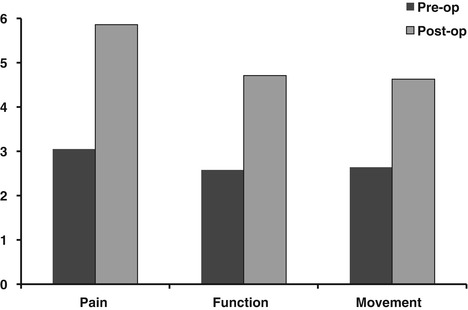, Paul D. Siney1 and Patricia A. Fleming1
(1)
The John Charnley Research Institute Wrightington Hospital, Wigan, Lancashire, UK
November 1962 marked the beginning of the era of a new speciality within orthopaedics – total hip replacement surgery.
This was the date when Charnley working in Wrightington Hospital introduced his method, which has become not only the basis for other designs, but also the source of information for joint replacement in general.
Successful clinical results uncovered the demand for the operation, extended the indications and increased patients’ expectations. Assessment before and after surgery using d’Aubigne and Postel’s scoring system [1, 2] have demonstrated that the clinical results remain successful [3–6]. At the latest review of our clinical database, 89.7 % of patients are pain free and a further 8.6 % have no more than an occasional discomfort. 74.3 % of patients have normal or near normal function for age, gender and underlying pathology and 77.4 % of patients have full or nearly full range of movement on their operated hip. The mean pre-operative and post-operative clinical scores are shown in Fig. 40.1.


Fig. 40.1
Clinical assessment using Merle d’Aubigne Postel scoring of pre- operative and post-operative pain, function and movement
In order to understand the reasons for the clinical success, the need for regular follow-up with good quality radiographs and early intervention in cases of impending failures, it is essential to understand and accept the very simple fact: the arthroplasty is a foreign body bursa housing a neuropathic spacer.
Stay updated, free articles. Join our Telegram channel

Full access? Get Clinical Tree








